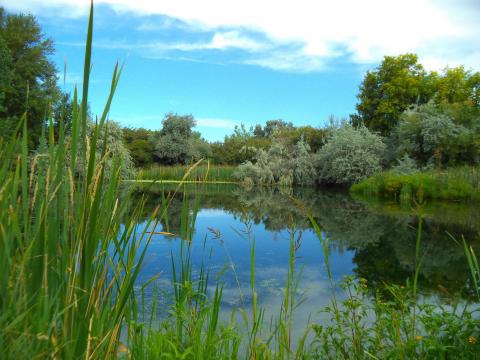
Report Hunting Violations
With hunting seasons in full swing, officers need your help
With most of Utah’s hunting seasons in full swing, wildlife officers are asking hunters and anglers—and others who are in the outdoors too—to watch for illegal hunting activities. That includes hunters shooting animals but not retrieving them, shooting after dark or any activity that seems suspicious.
Division of Wildlife Resources Captain Mitch Lane says DWR conservation officers catch plenty of wildlife violators on their own. But the officers are spread thin. That’s where you come in.
“We need your help,” Lane says. “While you’re enjoying time in the outdoors this fall and winter, please be observant. If you see something that doesn’t seem right, please let us know.”
“Even if what you saw doesn’t look like a big deal,” says DWR Law Enforcement Section Chief Rick Olson, “let us know about it. Some of our most significant cases started when someone called us with a small tip that led us to more information.”
UTiP hotline
If you witness something you know is a hunting violation, or you see something that’s simply suspicious or out of the ordinary, Olson encourages you not to confront the person who committed the violation. Instead, contact the DWR immediately by calling 1-800-662-DEER (3337).
1-800-662-DEER is the agency’s Utah Turn-in-a-Poacher (UTiP) hotline. It’s staffed 24 hours a day, seven days a week. Olson encourages you to place the UTiP number in your phone. “If the number’s in your phone,” he says, “you won’t have to remember it when a violation occurs. You’ll have it right at your fingertips.”
Another option is to pull out your hunting or fishing license: the UTiP number is printed on it.
If the UTiP number isn’t in your phone, and you don’t have a hunting or fishing license or permit with you at the time the violation occurs, you can still get the number at www.wildlife.utah.gov. You can also reach law enforcement officers directly by calling the nearest DWR office, sheriff’s office or local police department.
Be a good witness
Keep a few things in mind, and you’ll provide DWR officers with what they need to make an arrest:
- A description of the person and the location where the incident is occurring. “If you have a GPS unit with you,” Olson says, “give us the coordinates. GPS coordinates are really helpful in getting us to the right spot as quick as possible.”
- If possible, provide a license plate number for the person’s vehicle.
If you find something suspicious
If you find something suspicious that isn’t an emergency—for example, if you find a dead big game animal from which someone has removed the head—or if you have any other information you want to share about a possible wildlife violation, you can report it two ways:
- Call 1-800-662-DEER (3337)
- Email the information to officers at turninapoacher@utah.gov.
Olson says if you provide the information via email, officers won’t receive it immediately. “If you send information to us via email,” he says, “it might be a day or two before we can get back with you.
“If you need to reach us right away,” he says, “call 1-800-662-DEER.”
“Officers on patrol”
Visiting or subscribing to the “Officers on patrol” web page is a great way to learn about some of Utah’s recent poaching arrests and to stay current on poaching cases DWR officers need your help with.
“Officers on patrol” is available at www.wildlife.utah.gov/dwr/news/officers-on-patrol.html.
Fishing reports - available at http://wildlife.utah.gov/hotspots .
New K-9 conservation officer joins the DWR
One of the DWR’s newest conservation officers is much shorter and furrier than his counterparts in law enforcement, but he’s pawsitively dedicated to helping protect wildlife. K-9 Cody recently completed his certification and has joined the DWR as a conservation officer in southern Utah. Reporters and photographers are invited to meet Cody — and his partner Officer Josh Carver — and learn how Cody is helping track down evidence, find wounded animals and assist in investigations.
============
The Fish Lake perch tournament is a wildly popular ice-fishing contest in southern Utah. It won’t happen until late January 2018, but DWR personnel are already preparing for it. Biologists plan to catch, tag and release hundreds of perch at Fish Lake throughout the fall. When the anglers catch the tagged fish during the tournament, they’ll win some exciting prizes. Reporters and photographers are invited to join the biologists as they catch and tag fish for this fun annual event.
==============
Next week, DWR biologists will use electrofishing equipment to sample fish in the Lower Provo River. After the fish have been temporarily stunned, DWR employees and volunteers will work quickly to net the fish, weigh and measure them and record the data. Then, they’ll release the unharmed fish back into the river. The biologists expect to find brown and rainbow trout of various sizes, and are interested to see if any other sportfish turn up in the survey. Reporters and photographers are invited to join biologists at the river. You’ll get a detailed look at how they survey this Blue Ribbon fishery and manage its trout populations.
================
Next week, DWR biologists will take a close look at the walleye population in Starvation Reservoir. The reservoir is one of northeastern Utah’s most popular fisheries and is home to a variety of fish. The biologists will boat across the reservoir over the course of three days and pull gill nets at multiple locations. The walleye are fertile in Starvation, so the biologists expect to see many different age classes of fish. After they pull the fish out of the nets, the biologists will weigh and measure them and check their stomach contents. Reporters and photographers are invited to join the survey team, see some great fish and interview the biologists who will use the gill-netting data to manage the fishery.